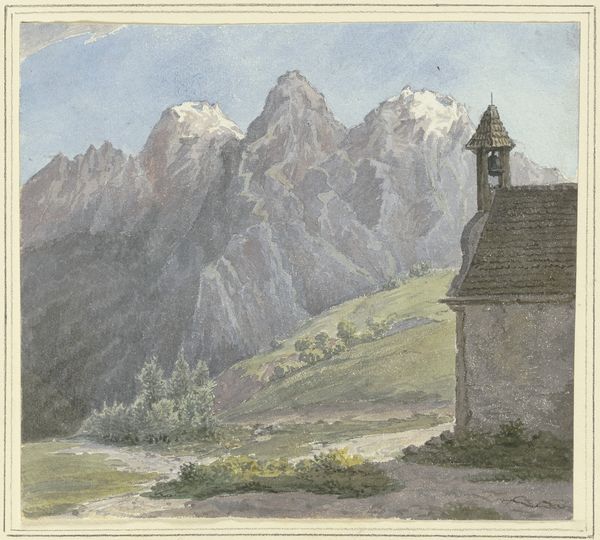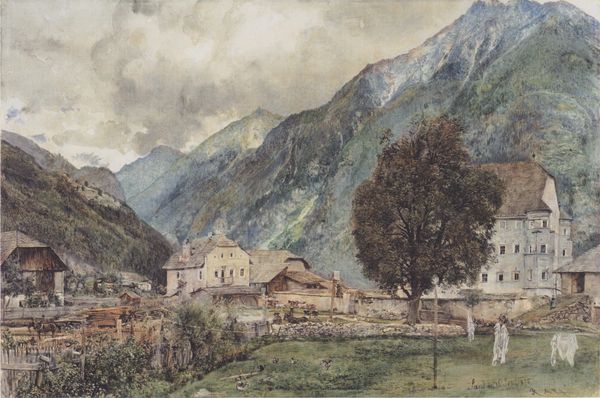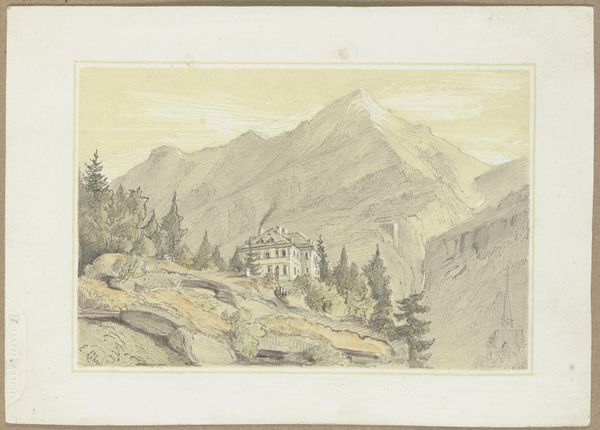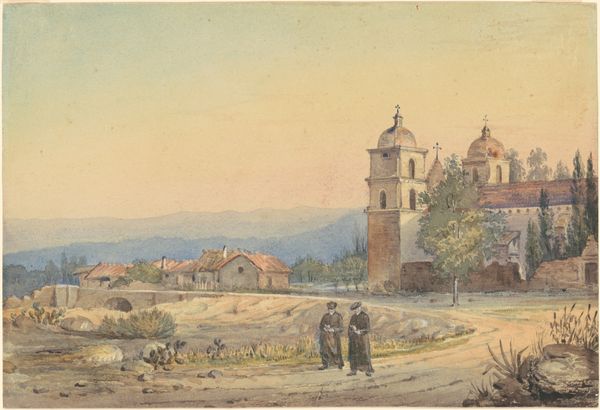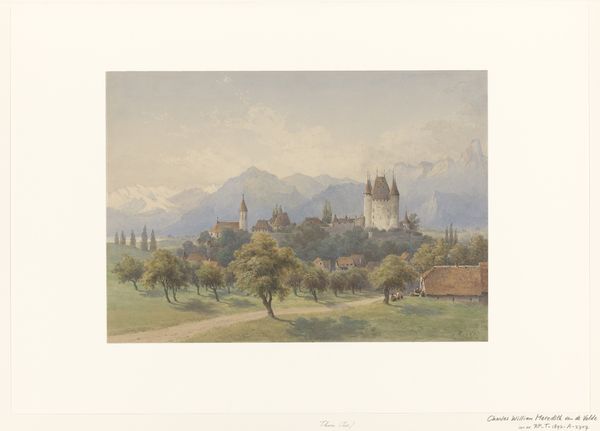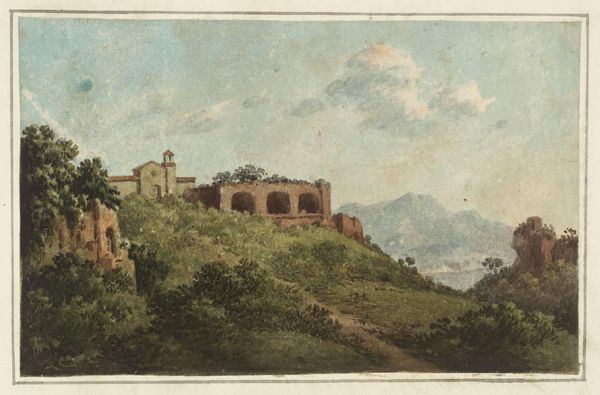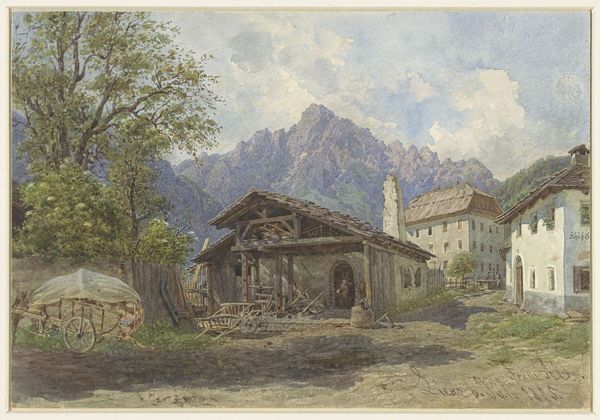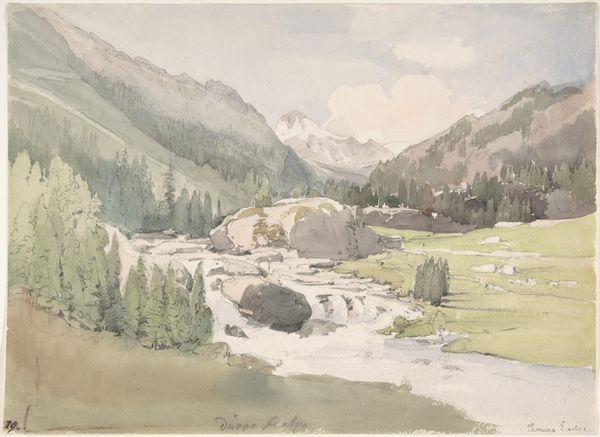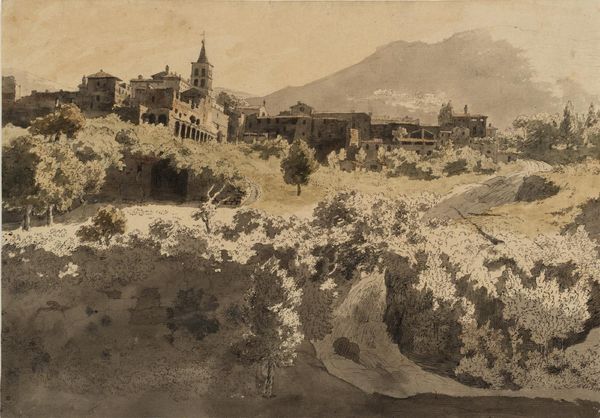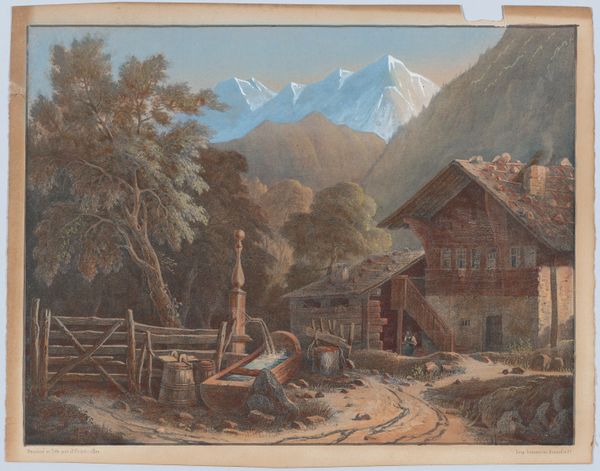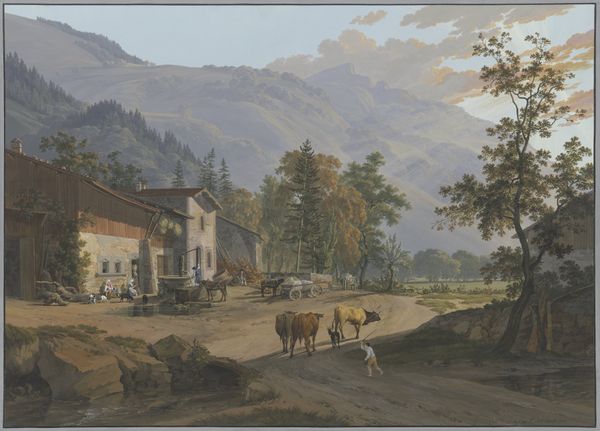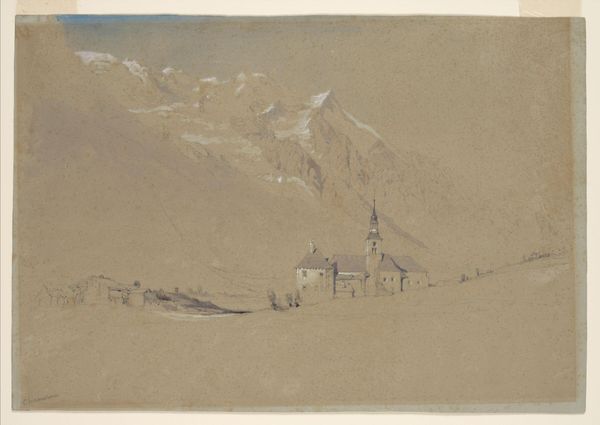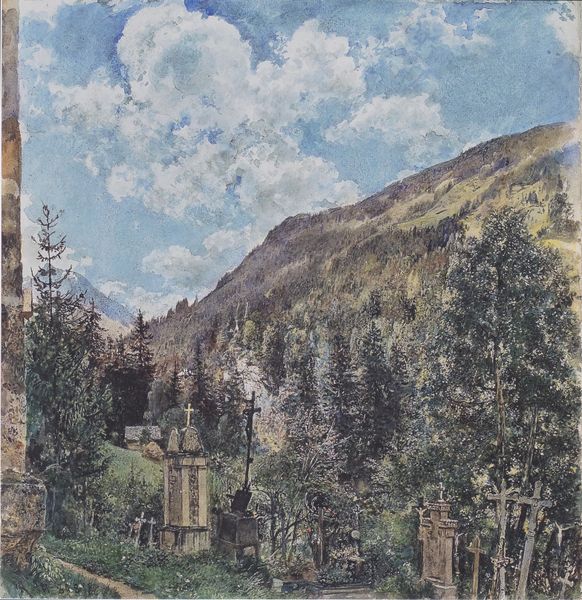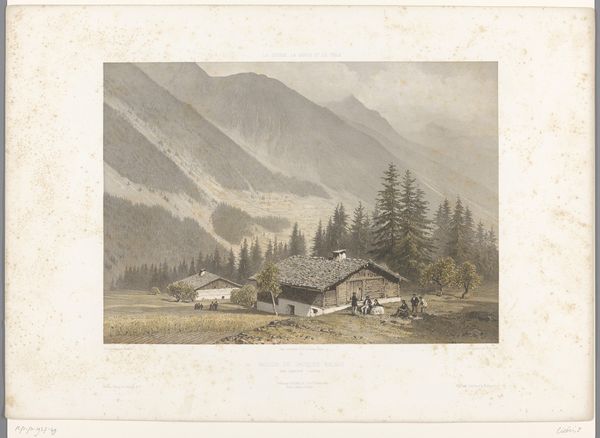
drawing, tempera, watercolor
#
drawing
#
16_19th-century
#
austrian
#
tempera
#
light earthy tone
#
landscape
#
watercolor
#
romanticism
#
watercolor
Copyright: Public Domain
Curator: Today, we’re looking at Rudolf von Alt’s "Graveyard in Ischl," a watercolor and tempera work created in 1838. Editor: It's lovely, though it evokes a certain melancholy. The light is soft, but there’s also this inescapable quietude that almost feels… isolating. Curator: Note how von Alt uses light and shadow to structure the composition. The church facade is brilliantly lit, immediately drawing the eye, while the surrounding landscape is rendered in softer, more muted tones. The contrasting tonalities are essential. Editor: The choice of subject matter itself raises questions. Graveyards, especially in the Romantic period, were sites of reflection, and the artist’s emphasis on the church invites speculation about the community’s relationship with faith and mortality, class too. Curator: Absolutely, but it’s also vital to acknowledge his mastery of perspective. Look how skillfully he depicts spatial relationships between the church, the graves, and the mountain range. He uses linear perspective and atmospheric perspective to create depth in a precise manner, doesn't he? Editor: The graveyard, though. In its silent witness, it feels pregnant with untold histories, lost voices—particularly given the era’s political upheavals. Von Alt’s composition gives us an uncanny peek into the intersection between individual loss and a community's memory. Curator: Certainly. However, the strength of this artwork lies, structurally speaking, in its equilibrium, how the various perspectival vectors find stability through color as well as geometric arrangement. It showcases his talent in manipulating visual elements to achieve such a balanced effect. Editor: A talent that also perhaps, reveals the intertwined threads of life, death, and enduring faith, that can be said for sure! Curator: Yes, it provides a nuanced vision, that transcends its simple visuality. Editor: And challenges us to contemplate the society for whom that particular landscape, however precisely rendered, may have meant so much.
Comments
No comments
Be the first to comment and join the conversation on the ultimate creative platform.
